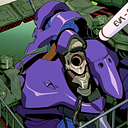Open CV, Computer Vision, AI, How does it work?

An Overview of OpenCV
Intel created OpenCV, an open-source computer vision and machine learning software library. It establishes a standard framework for computer vision and related areas applications. It’s used to make real-time machine recognition of pictures, objects, and video processing applications more efficient.
To have a better grasp of how OpenCV works, consider the following topics: computer vision, OpenCV’s related programming languages, and OpenCV applications.
What is Computer Vision?
Our eyes transmit information to our brain, which evaluates what we see. We can identify people, objects, and motions, as well as assess whether something is good or harmful in a specific situation. As a result, computer vision (CV) aims to mimic what our eyes perform. It is concerned with the use of computers and other electronic devices to obtain information from digital photos or movies. It can also evaluate complicated pictures, compare them, and identify discrepancies.
Computer vision has been extremely beneficial to the advancement of technology in our current civilization as it has progressed from theory to reality. Many firms have found computer vision to be beneficial, and some have found it to be essential. OCR, vision biometrics, object identification, special effects, 3D printing and image capture, sports, smart automobiles, medical imaging, and many other applications employ computer vision.
From the perspective of an IT expert, they want to automate processes involving visualization. As a result, it sparked tremendous development, generating a lot of interest from both entrepreneurs and software development companies. These are people from many walks of life, with varying degrees of expertise, who work together to reduce the friction between production and commercialism. They also want to discover the right mix of computer vision’s complexity and sell it to the world.
Because it may be used in nearly every field, computer vision strives to make our lives simpler. Clients and software developers become heroes in the world of computers as a result of these apps. Clients that seek to tackle low-level CV issues using innovative and daring ways. Furthermore, the incredibly skilled engineers are working together to build CV systems for computers and other devices.
Overview of OpenCV
There are several primary fields related with computer vision, including image processing, video capture and analysis, face identification, and object detection, but developing real-time applications requires a cross-platform library. This is where OpenCV, a C++-based program that has now been ported to Java and Python, comes in. It operates on a variety of operating systems, including Windows, macOS, Android, iOS, and Linux.
Although OpenCV is an excellent tool for computer vision, system development without consideration for the widest possible audience remains a major issue among entrepreneurs. There are also occasions when both clients and developers are undecided about the level of success they wish to attain. As a result, both parties must be familiar with OpenCV when dealing with computer vision.
The OpenCV library and its accompanying components will be highlighted in the next section.
Features of OpenCV Library
Using the OpenCV library, you will be able to:
- Image reading and writing
- Video capture and storage
- Filtering and modification of images are examples of image processing.
- Detecting features
- Detecting objects in video or images, such as human body parts, automobiles, signs, and so on.
- An examination of video
OpenCV Library Modules
OpenCV can create pictures from scratch, draw images with code, record and store movies, process images, conduct feature detection, recognize particular objects and analyze films, and determine an object’s orientation and motion.
The following are the major OpenCV library modules:
- Core Functionality
The fundamental data structures such as Scalar, Point, Range, and others are covered by the core functions of the OpenCV library. It uses the multidimensional array Mat to hold pictures.
- Image Processing
Image filtering, geometric image transformations, color space conversion, histograms, and other image processing procedures are covered in this module.
- Video
The principles of motion estimation, background removal, and object tracking are covered in this module.
- Video I/O
The OpenCV library is used to demonstrate video capture and video codecs in this lesson.
- Calib3d
Basic multiple-view geometry techniques, single and stereo camera calibration, object position estimation, stereo correspondence, and components of 3D reconstruction are all covered in this topic.
- Features2d
The principles of feature detection and description are covered in this module.
- Objdetect
The detection of objects and instances of specified classes such as faces, eyes, traffic lights, people, automobiles, and so on is included in this module.
- Highgui
This is a user-friendly interface with basic UI features.
OpenCV Applications
Robotics, medical, industrial automation, security, and transportation all use OpenCV. OpenCV may be used to determine a robot’s position in robotics. Navigation, obstacle avoidance, and Human-Robot Interaction are all possible applications.
OpenCV can aid patients with cell or tumor categorization and detection, 2D/3D segmentation, 3D organ reconstruction, and vision-guided robotic operations in medicine.
It can be useful in determining stock faults, barcodes and packaging, item sorting, document analysis, and other areas of industrial automation.
This may be utilized in surveillance and biometrics for security, and it can also be used to detect driver vigilance and build autonomous cars for transportation.
Conclusion
Entrepreneurs may empower their clients by discovering their passion and vision for image processing and computer vision applications. With the growing need for image-based search engines, entrepreneurs and software developers alike can benefit from technologies like OpenCV.
Computer vision is not just a fascinating science, but also a lucrative industry. Expenses and a shortage of resources, on the other hand, are the actual problems that most businesses encounter. Despite the widespread attention, there are still limits in the field of computer vision.
